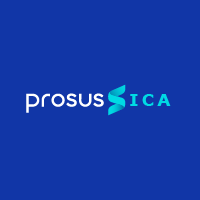
Prosus SICA
View Brand PublisherAssistive Technology: Exploring the opportunities and challenges the sunrise sector offers
To spur innovation and increase access to AT products, it is necessary to create a market-led ecosystem, where innovators see adequate financial and commercial incentives to engage with the sector.
A recent WHO-UNICEF report reveals that more than 2.5 billion globally are in need of atleast one Assistive Technology (AT) product, such as hearing aids, wheelchairs, or programs that help with communication. This number is expected to rise to over 3.5 billion by 2050. Moreover over 1 billion people who need an AT product lack any access to them or at best have minimal access. An overwhelming majority of people who do not have access to AT products reside in middle- and lower-income countries, where economic deprivation presents an additional barrier to overcome.
While these numbers may appear disheartening at first glance, they also indicate the immense, untapped market potential in this space. Thus far, the AT sector has been driven primarily by charitable initiatives, which while beneficial, have not been able to create a sustainable model for AT innovation and access. It has not received substantial investor interest as it has been traditionally seen as a financially unviable sector. This in turn has restricted the pace of innovation in the sector and pushed up the costs of AT products out of reach of a majority of people who need them.
Massive opportunity for entrepreneurs
Another recent study estimates that the AT sector’s global market revenue was USD 21.8 billion in 2021 and is expected to grow to USD 28.8 billion by 2028. These numbers however reflect only the projections based on current market size. Innovation in AT products could lead to the creation of entirely new market segments which could further increase the potential market size to hundreds of billions of dollars.
To increase access, reduce the cost of AT products, and spur innovation, it is necessary to create a market-led ecosystem where innovators see adequate financial and commercial incentives to engage with the sector. Helping create sustainable businesses is the most efficient way of expanding the accessibility and reach of AT products. It is also important to see the AT space as a single global market, as most products are easily replicable across countries. This allows products developed in one market, such as India, to be sold across the world. Seeing the global AT market as one single market addresses the question of the sector’s financial viability by recognising that an AT product could be used by anyone anywhere with only the smallest of modifications. There is therefore true potential in the AT becoming a sunrise sector.
Investors, including Private Equity and Venture Capital funds, can be at the forefront of this change by not only providing adequate funding but also leveraging their experience gained in other sectors to hand-hold budding entrepreneurs in the AT sector in creating viable, impactful businesses.
A prime example of this is the Prosus Social Impact Challenge for Accessibility (SICA). Currently in its third edition, Prosus SICA aims to nurture a growing, viable AT sector in India by providing both necessary funding and mentorship to the most innovative AT startups in India and help take them global. The success of the Prosus SICA startups, including Thinkerbell Labs, Stamurai, and Neomotion among others, over the last two editions is testament to the fact that if provided with the necessary financial and business help, AT startups can in fact create products that can improve the daily lives of millions of people while still being financially sustainable. It is necessary for more such programs to be created and led by investors across the world for the global AT space to reach its true potential and for billions of people to lead better lives.







